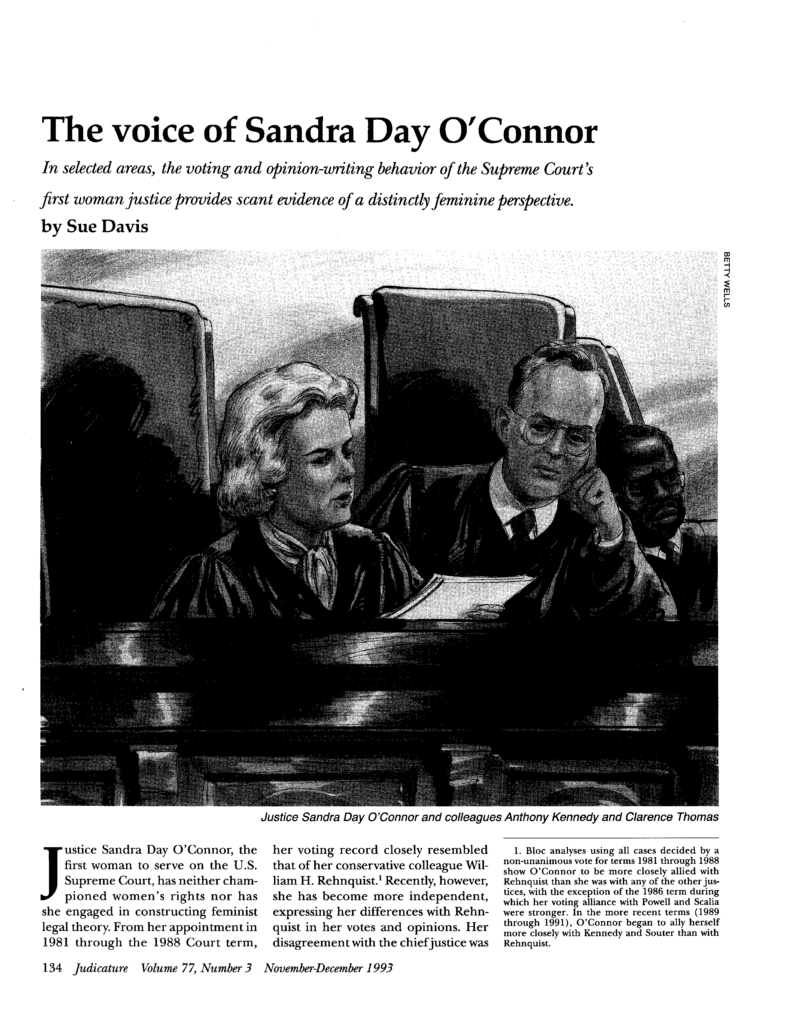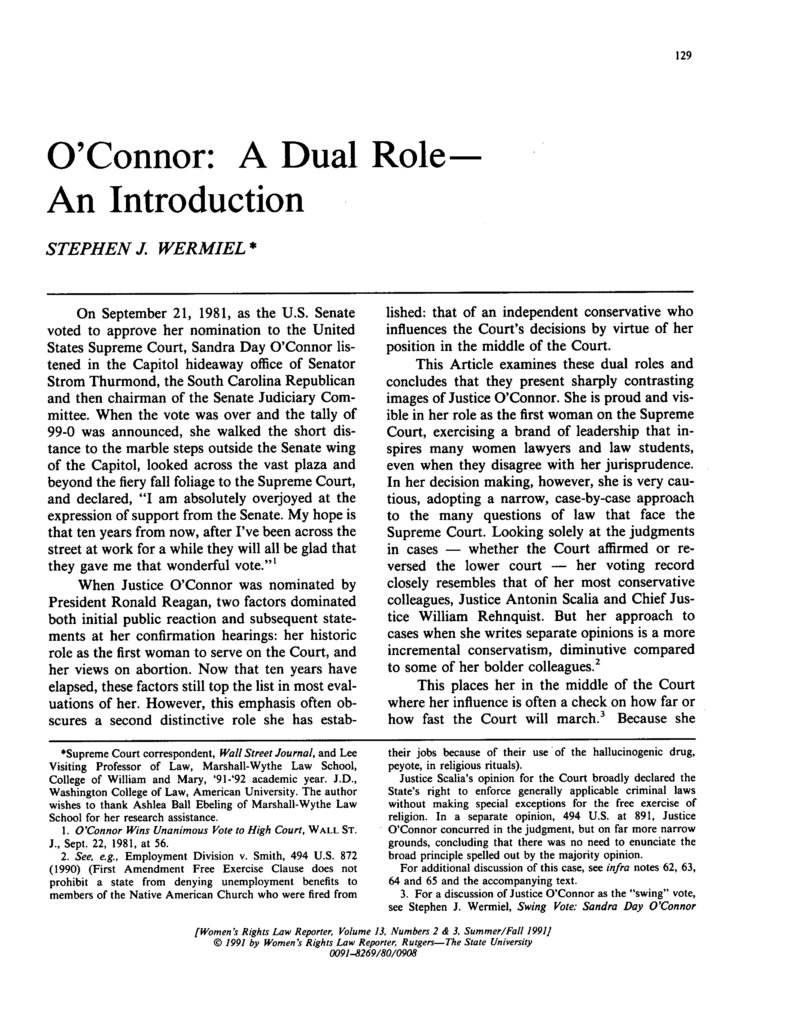Influences and Influence: Justice Sandra Day O’Connor and Constitutional Doctrine
Articles
INFLUENCES AND INFLUENCE: JUSTICE SANDRA DAY O’CONNOR AND CONSTITUTIONAL DOCTRINE
Kenneth M Murchison
INFLUENCES 392
Gender: The First Female Justice 394
Politics: A Reagan Republican from the West 398
Legislative Experience: A Practical Politician 400
Religion: An Episcopalian 403
Judicial Experience: A State Court Judge 405
INFLUENCE AS A MEMBER OF THE COURT 410
Federalism 410
Separation of Powers 414
Individual Rights 417
Substantive Due Process 418
Equal Protection 421
Freedom of Religion 428
Freedom of Speech 434
Takings 444
Dissents: Failed Attempts to Influence 447
INFLUENCE ON THE FUTURE 452
CONCLUSION 460
Sandra Day O’Connor was both the first woman appointed to the United States Supreme Court and the first justice that President Ronald Regan appointed. She served for nearly a quarter century and earned a reputation as a centrist on a Court that was often closely divided. As a result, she was frequently a member of the Court’s majority in cases with narrow majorities, and her views often defined the reach and limits of the Court’s rulings.
391
This article offers an assessment of Justice O’Connor’s impact on constitutional doctrine from the perspective of a decade after her retirement. After a brief biographical summary, it describes how five factors-gender, legislative experience, religion, and judicial experience-influenced her judicial decisions. It then surveys her impact on constitutional doctrine while she was a member of the Court







